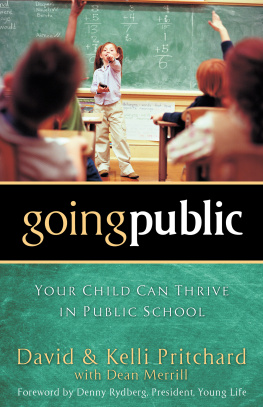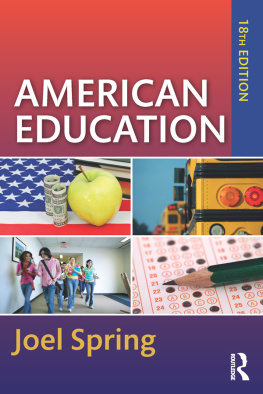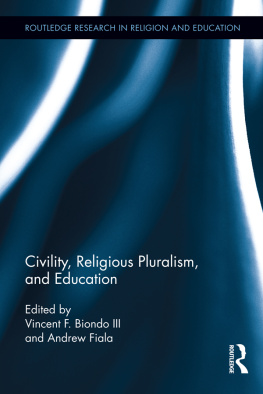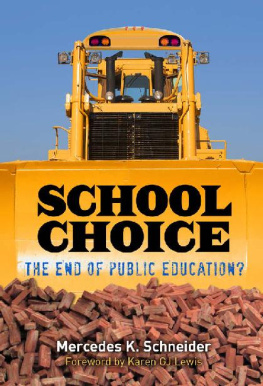The Bible, the School, and the Constitution
The Bible, the School, and the Constitution
The Clash that Shaped Modern Church-State Doctrine
STEVEN K. GREEN


Oxford University Press, Inc., publishes works that further
Oxford Universitys objective of excellence
in research, scholarship, and education.
Oxford New York
Auckland Cape Town Dar es Salaam Hong Kong Karachi
Kuala Lumpur Madrid Melbourne Mexico City Nairobi
New Delhi Shanghai Taipei Toronto
With offices in
Argentina Austria Brazil Chile Czech Republic France Greece
Guatemala Hungary Italy Japan Poland Portugal Singapore
South Korea Switzerland Thailand Turkey Ukraine Vietnam
Copyright 2012 by Steven K. Green.
Published by Oxford University Press, Inc.
198 Madison Avenue, New York, New York 10016
www.oup.com
Oxford is a registered trademark of Oxford University Press
All rights reserved. No part of this publication may be reproduced, stored in a retrieval system, or transmitted, in any form or by any means, electronic, mechanical, photocopying, recording, or otherwise, without the prior permission of Oxford University Press.
Library of Congress Cataloging-in-Publication Data
Green, Steven K. (Steven Keith), 1955
The Bible, the School, and the Constitution: the clash that shaped the modern church-state doctrine / Steven K. Green,
p. cm.
ISBN 978-0-19-982790-9 (hardcover: alk. paper)ISBN 978-0-19-982791-6 (ebook)
1. Religion in the public schoolsLaw and legislationUnited StatesCases.
2. Freedom of religionUnited StatesCases. 3. Church and stateUnited StatesCases.
4. Religion in the public schoolsLaw and legislationUnited StatesHistory.
5. United States. Supreme CourtHistory. I. Title
KF4162.G74 2012
344.730796dc23 2011018787
1 3 5 7 9 8 6 4 2
Printed in the United States of America on acid-free paper
CONTENTS
PREFACE
The genesis of this book goes back many years to my interest in the origins of the legal conflict surrounding prayer and Bible reading in the public schools. Early in my research, I quickly realized the interconnectedness of that issue with the controversy over public funding of religious education. Research into the origins and evolution of the nineteenth-century School Question, as it was called, led me to the apex of that conflict following the Civil War, a particularly active period in which people from many walks of life debated the role of religion not solely in education but as part of the nations identity. This very public discussion took place in Congress, the courts, and in the press, and it inspired several attempts to amend the language of the religion clauses to the Constitution. In one of my first writings on this period, The Blaine Amendment Reconsidered (American Journal of Legal History, 1992), I explored the recurrent claim that the near passage of the Blaine Amendment in 1876which would have applied the religion clauses to the states, among other thingsundermined the legitimacy of the later incorporation of the Bill of Rights pursuant to the Due Process Clause of the Fourteenth Amendment. To my surprise and pleasure, that article has been cited over the years as a leading analysis of the Blaine Amendment, though commonly not for its primary thesis but for its documentation of the religious (anti-Catholic) impulse in the events surrounding the amendment. Courts also, including the Supreme Court in 2000, have cited that article for that latter theme in evaluating the historical basis for the rule against funding religious education. Those citations, while always gratifying to receive, have often failed to appreciate the limited scope of the latter discussion and the larger context of the great church-state debate of the mid-nineteenth century.
In this book I explore the development of the nineteenth-century School Question to its culmination in the Blaine Amendment, but on a more comprehensive level. I hope to elucidate the variety of impulses and attitudes that informed both aspects of the School Question and how that controversy impacted modern Supreme Court doctrine. I build on themes contained in more recent articles and in part of my book The Second Disestablishment (2010), but here present a complete argument. [Portions of Chapter Six previously appeared in The Insignificance of the Blaine Amendment, Brigham Young University Law Review (2008:295333) and is reprinted with permission.]
In a project with such long roots, it is impossible to name all who have provided substantive insight. Over the years, I have benefitted from helpful comments from Fred Gedicks, Derek Davis, Frank Kemerer, Steven Gey, Tom Berg, Rick Garnett, Paul Finkelman, and Noah Feldman, among others. I also wish to thank my editor at Oxford University Press, Theo Calderara, my assistant Reyna Meyers, and the staff at the Willamette University libraries, particularly Galin Brown. As always, I could not have accomplished this work without the love, support, and patience of my wife, Cindy, who never tires of hearing about church-state history. This book is dedicated to my mother, Pauline, and my mother-in-law, Betty, whose devotions to their Protestant and Catholic faiths and commitments to interfaith respect were a model for us all. We miss them dearly.
The Bible, the School, and the Constitution
Introduction
On June 17, 1963, the United States Supreme Court announced its decisions in Abington School District v. Schempp and Murray v. Curlett, companion cases involving the constitutionality of Bible reading in public schools. The outcomes of both cases were eagerly anticipated. Only a year earlier, the Court had struck down, 8-1, a New York law that had required the daily recitation of a prayer in public schools. Reaction to the Regents Prayer case (Engel v. Vitale) had been swift and decidedly negative. Religious leadersranging from Cardinal Francis Spellman and Episcopal Bishop James A. Pike to evangelist Billy Grahamhad condemned the ruling. God pity our country when we can no longer appeal to God for help, Graham declared. Politicians joined in as well. North Carolina Senator Sam Ervin, a self-described constitutional expert who would later gain fame during the Watergate hearings, insisted that the Supreme Court has made God unconstitutional. Despite the widespread public condemnation of Engel, the justices did not retreat. By the same 8-1 margin, they found that readings from the Bible and recitations of the Lords Prayer, conducted as part of daily opening exercises, violated religious neutrality as required by the Establishment Clause of the Constitution.
The public outcry over the Schempp and Murray decisions was even louder than the one over Engel. Because Engel had involved a prayer drafted by a state agency, some religious leaders were ambivalent about the outcome. In contrast, Schempp and Murray involved informal practices of prayer and Bible reading that were common throughout the nations public schools. Politicians and religious conservatives roundly condemned the decisions, with South Carolina Senator Strom Thurmond calling the holdings another major triumph of secularism and atheism which are bent on throwing God completely out of our national life. Billy Graham claimed that the decisions outlawed practices that stretched back to the time of the Pilgrims, and Alabama Governor George Wallace, repeating an earlier act of defiance, challenged the justices to stop him from going into the schools and reading from the Bible to students.
Next page









